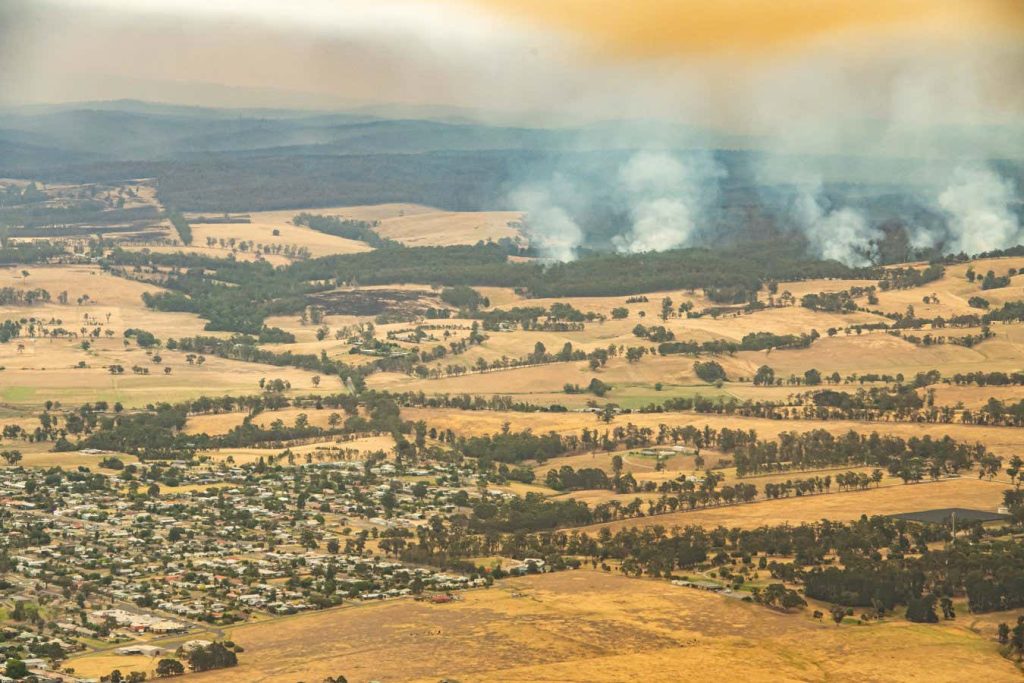The East Gippsland fires in Victoria, Australia, in January 2020
JASON EDWARDS/POOL/EPA-EFE/Shutterstock
Smoke from bushfires that raged across south-eastern Australia in 2019 and 2020 was known to have depleted Earth’s ozone layer, but it wasn’t clear exactly how. An analysis of the chemistry at work finds the smoke may have enabled hydrochloric acid to dissolve at higher temperatures, generating more of the reactive chlorine molecules that destroy ozone.
From November 2019 to January 2020, the Black Summer bushfires sent nearly a million tonnes of smoke into the air, which was carried high into the stratosphere on giant storm clouds created by the fires themselves.
“Satellite observations showed chemistry that has never been seen before,” says Kane Stone at the Massachusetts Institute of Technology. Particularly concerning was a decrease in hydrochloric acid and an increase in chlorine nitrate, changes that could deplete the thin layer of ozone molecules that blocks harmful UV radiation.
Advertisement
Stone and his colleagues suspected the changes were caused by the way wildfire smoke affects the solubility of hydrochloric acid, which is in the stratosphere largely due to emissions of a now-banned class of long-lasting chemicals called chlorofluorocarbons.
Normally, hydrochloric acid can only dissolve at the very cold temperatures that occur over Earth’s poles. When dissolved, it can more easily react with water to produce chlorine molecules that aggressively destroy ozone. Based on laboratory studies, though, the researchers found organic particles like those in wildfire smoke can enable hydrochloric acid to dissolve at higher temperatures.
To test this idea, the researchers modelled how changes in the solubility of hydrochloric acid affected the chemistry of the stratosphere. They found the model matched observations of the stratosphere during the Australian fires “remarkably well”, says Stone.
Their model suggests smoke from the fires led to a 3 to 5 per cent depletion in the ozone layer above mid-latitudes and increased the size of the ozone hole that appears seasonally above Antarctica.
Albert Ansmann at the Leibniz Institute for Tropospheric Research in Germany says he is convinced their model explains ozone depletion in the mid-latitudes, but thinks the smoke could have even more significant impacts at the South Pole. Smoke from northern hemisphere fires could have similar effects on ozone over the North Pole.
Ansmann says his group has seen an increasing amount of smoke reach the stratosphere over the past decade, a problem that could persist as a hotter climate leads to larger and more intense wildfires.
Topics:

